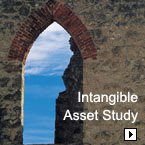 Changing notions of practice. Notions of Public Relations practice have tended to be narrow (media relations, corporate affairs etc). But we have seen it is broad and covers a wide range of roles and activities. The practice of Public Relations in the mould of relationship management is an area of PR practice with both a long provenance and considerable support in Public Relations circles and it has the virtue of explicating a very broad concept of Public Relations practice and there is a need for more research into what such practice really entails. However, it is a means by which the many practices of Public Relations can be brought together under a single umbrella concept to offer researchers a broad top-down approach to encompass the many domains of practice and to aid identification of the competencies and their effectiveness in the creation, maintenance and development of organisational relationships. The notion that relationships are pivotal to the success of organisations has considerable currency. It is reflected in the recent comments by Coase (2002 ibid) and in the writing of Manjak and Wimmeri, (Manjak & Wimmer 2003), Wilson and Swatiii (Wilson, & Swati 1995) Phillipsiii (Phillips, D 2006/1) and many others and Mar and Moustaghfiriv (Mar and Moustaghfir2005) grapple with notions of PR in their latest work on Intellectual Capital suggesting that there is a need to consider a range of Public Relations elements in considering the values considered Intellectual Capital:
Changing notions of practice. Notions of Public Relations practice have tended to be narrow (media relations, corporate affairs etc). But we have seen it is broad and covers a wide range of roles and activities. The practice of Public Relations in the mould of relationship management is an area of PR practice with both a long provenance and considerable support in Public Relations circles and it has the virtue of explicating a very broad concept of Public Relations practice and there is a need for more research into what such practice really entails. However, it is a means by which the many practices of Public Relations can be brought together under a single umbrella concept to offer researchers a broad top-down approach to encompass the many domains of practice and to aid identification of the competencies and their effectiveness in the creation, maintenance and development of organisational relationships. The notion that relationships are pivotal to the success of organisations has considerable currency. It is reflected in the recent comments by Coase (2002 ibid) and in the writing of Manjak and Wimmeri, (Manjak & Wimmer 2003), Wilson and Swatiii (Wilson, & Swati 1995) Phillipsiii (Phillips, D 2006/1) and many others and Mar and Moustaghfiriv (Mar and Moustaghfir2005) grapple with notions of PR in their latest work on Intellectual Capital suggesting that there is a need to consider a range of Public Relations elements in considering the values considered Intellectual Capital: - organisational culture;
- relationships with stakeholders;
- organisational image and reputation;
- “influence behaviour” which comprises the roles of monitoring progress and rewarding or compensating behaviour; and
- “external validation” which comprises the roles of internal and external communication, benchmarking, and compliance with regulations.
Relationship management as a form of practice is infrequently audited in such a manner that it contributes to valuing effort except in the very narrow sense that some companies in Australia, the USA and UK (and most of the European Union from 2006) are required to report on 'Stakeholder Relationships' with the narrowest, and almost inconsequential, of interpretations. A more robust approach returns us to the concepts how, and to what extent, Public Relations changes cultures both among 'stakeholders' and, more usefully, among publics. It suggests that there can be an overarching approach and many methodologies for evaluation. One can postulate that this will tend towards a form of balanced scorecardv (Kaplan & Norton 1996) reporting and the growing movement towards intangible asset valuation. The merit of taking this approach is that it can take the cost of Public Relations effect and replace it as a relationship asset for organisations. In the business world, this has many advantages. It offers a view that Relationships have a balance sheet value and are an asset. For example, the Australian Statement of Accounting Concepts 4 (SAC 4) 'Definition and Recognition of the Elements of Financial Statements', states that ‘assets’ are future economic benefits controlled by the entity as a result of past transactions or other past events. Thus 'Reputation' moves from the accountant's view of 'goodwill' and becomes an asset that can be accounted for on a balance sheet. The Public Relations manager is thereby responsible for an asset and the PR budget is translated into an investment in development of the corporate asset. The domains of Public Relations practice can thereby be measured in terms of investment in corporate assets and return on investment need not drop to the bottom line but is vested in sustaining the balance sheet.
iMandjak,T and Wimmer,2003 “A Business Relationships as Value Drivers ” 18th Annual IMP Conference,http://www.impgroup.org/uploads/papers/469.pdf accessed May 2004
ii Wilson,David T. and Swati Jantrania. (1995)“Understanding the Value of a
Relationship.” Asia-Australia Marketing Journal 2 (1):55-66.
iii Phillips, D. (2006) Relationships Are The Core Value for Organisations Corporate Communications: An International Journal ISSN:1356-3289 vol 11 no 1
iv Marr, B and Moustaghfir, K (2005) Defining intellectual capital: a three-dimensional approach Management Decision Volume 43 Number 9 2005 pp. 1114-1128
v The Balanced Scorecard (1996) Robert S. Kaplan and David P. Norton Harvard Business School Press 1996
Picture: Intangible Asset PWC
This comment is a machine generated load of tosh. I have let it through moderation to show how mindless modern marketing is.
ReplyDeleteOnlineuniverslwork is mostly trying to scam its way into your marketing budget and its up to you whether you trust them.